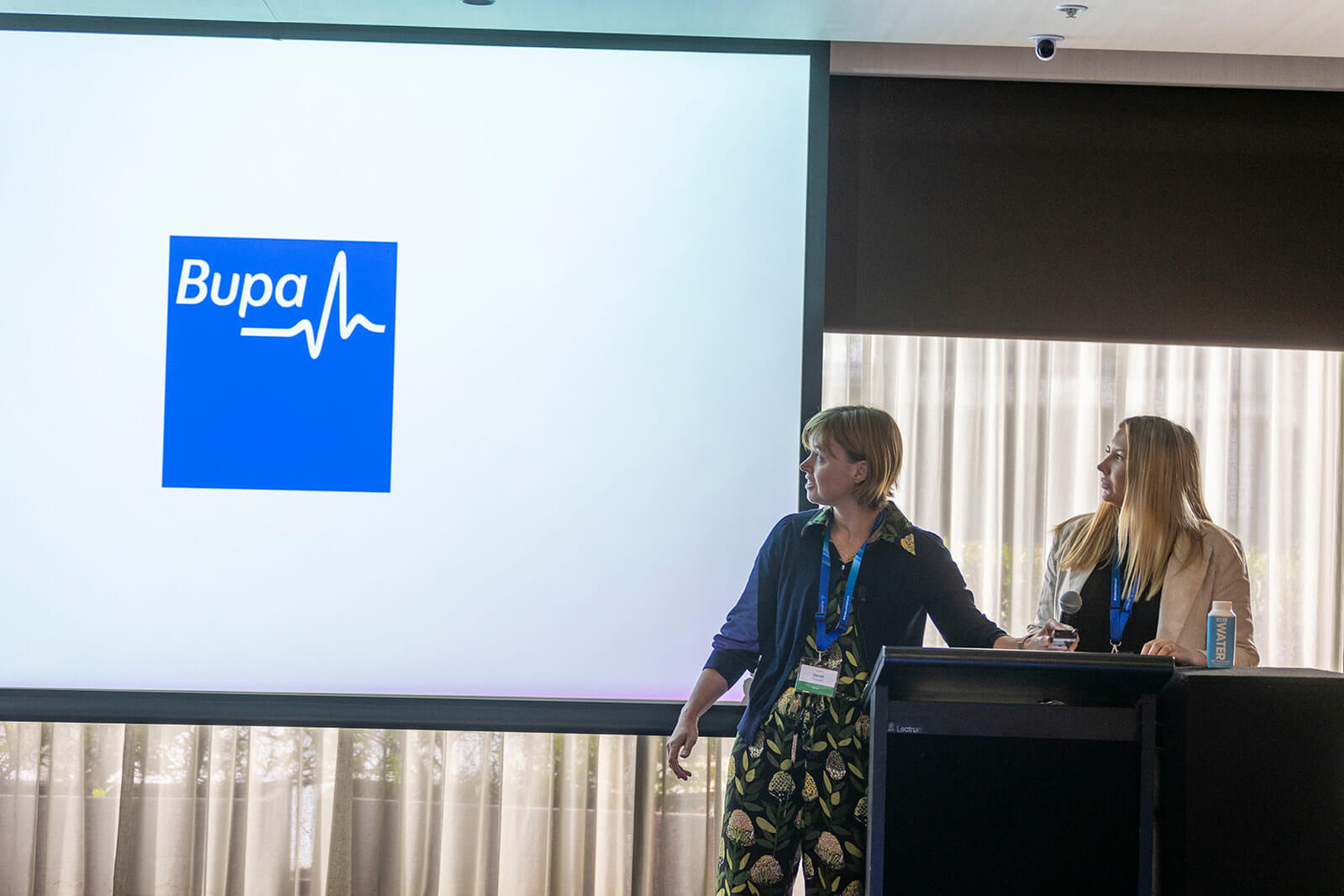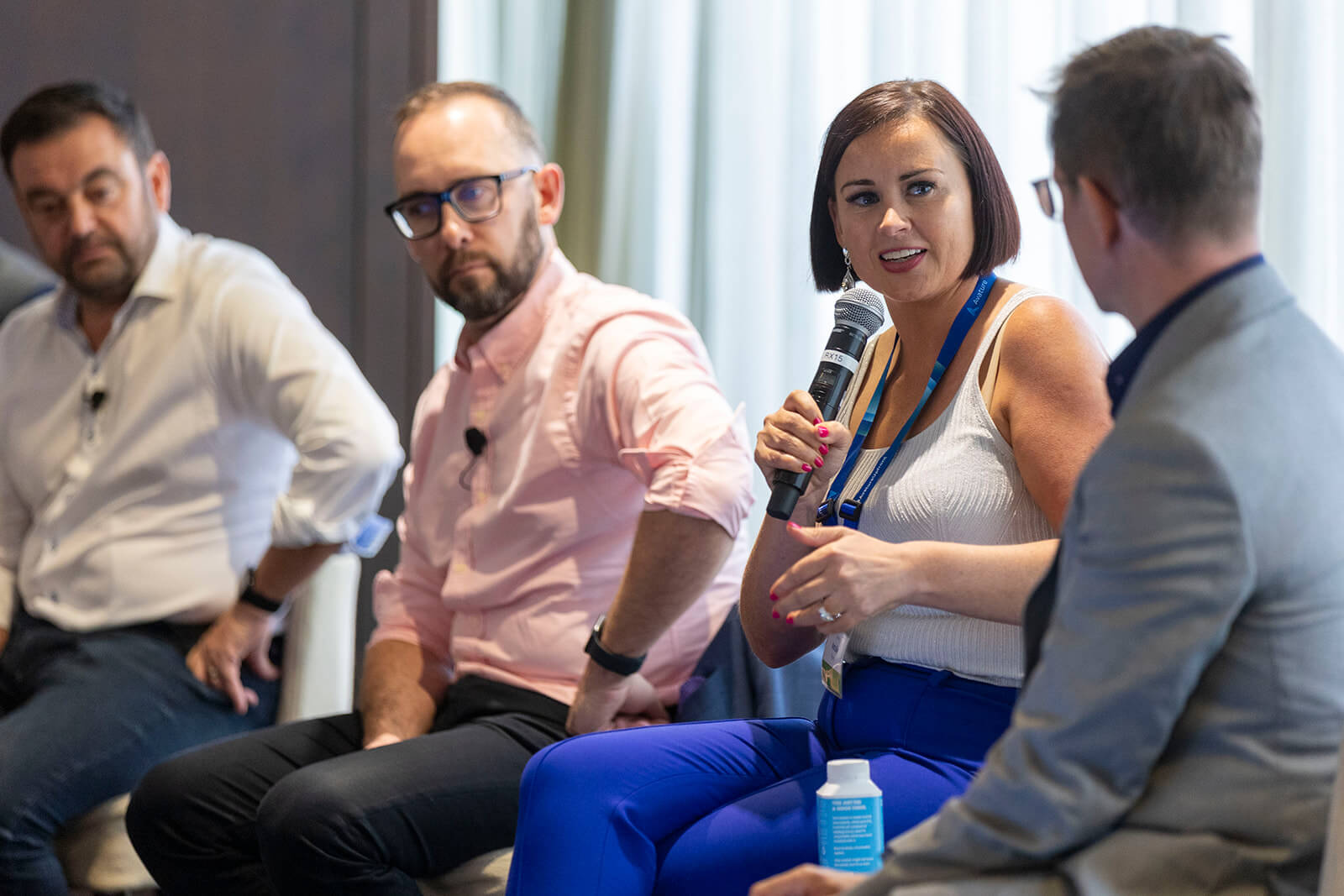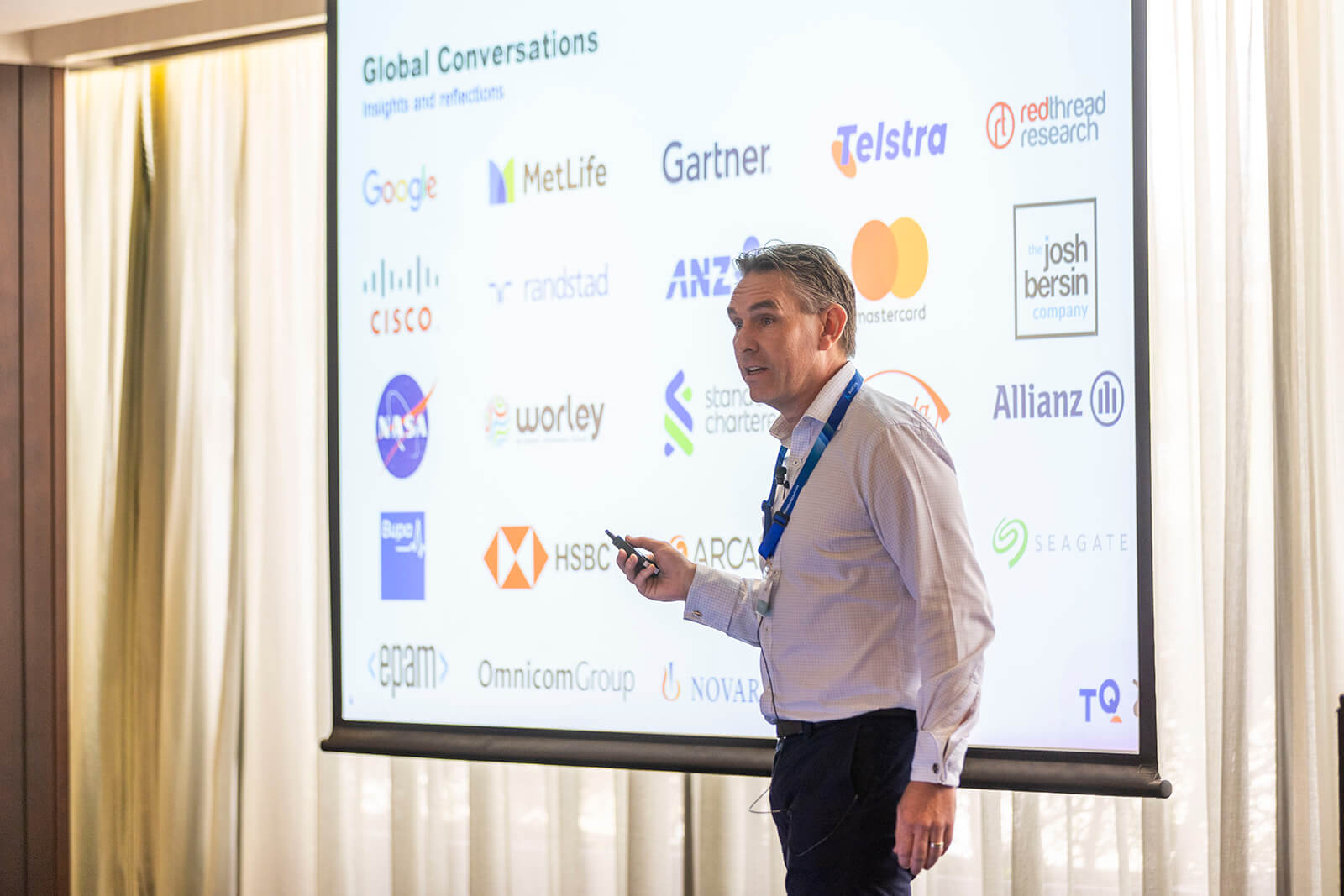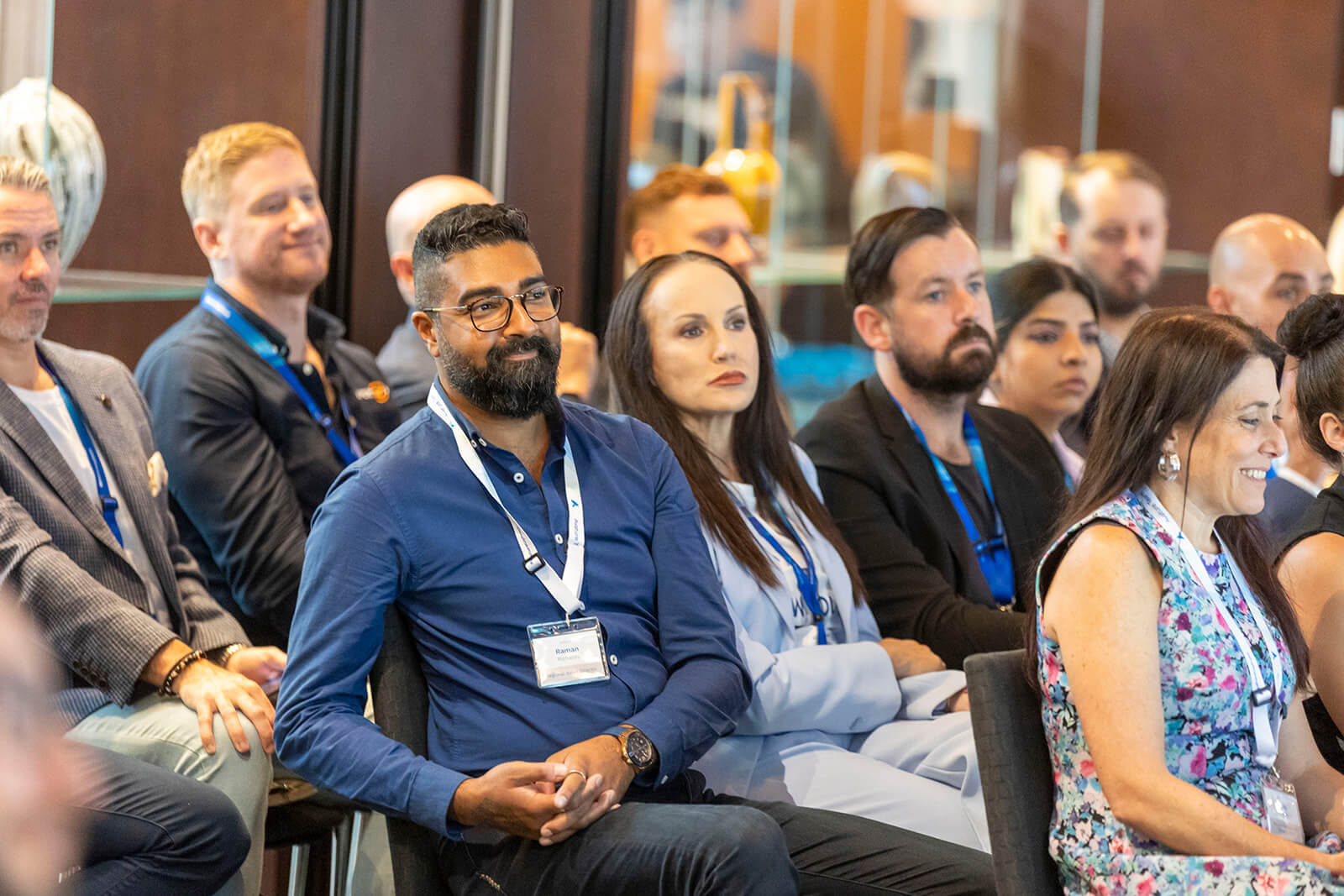
With panoramic views of Sydney’s iconic skyline serving as a backdrop, the ambiance of the Four Seasons hotel was set for a memorable day at the #AvatureUpfront APAC 2024 conference, the region’s most collaborative forum on the labor market, the latest technology and the future of HR.
Read on to discover the highlights from the conference, from Avature CEO Dimitri Boylan’s unique view on innovation to the strategies that are transforming recruitment and talent management in 2024.
HR Tech and the Revolution of AI
The conference opened with Avature CEO Dimitri Boylan’s remarks, who spoke about how the march of technological progress has forever altered the landscape of talent acquisition and management. Like evolution, which appears gradual when observed from a distance but reveals significant leaps upon closer examination, a digital disruption such as AI will undoubtedly transform the way we conduct business and reshape society itself.
Boylan stressed that, as we stand at the threshold of an unprecedented era of digital transformation, agility and adaptability will be the keys to thriving in the face of constant change. Companies must embrace the dynamic nature of the internet and the principles of entrepreneurship to remain relevant and competitive in a moment where HR is not just a function but a powerful engine of organizational excellence.
Avature, born in the internet age, embodies this ethos of interconnectivity and agility, offering a platform that empowers organizations to adapt and evolve in real-time. Boylan invited attendees to think of Avature not just as a software provider but as a strategic partner in their quest for success in an increasingly competitive landscape.
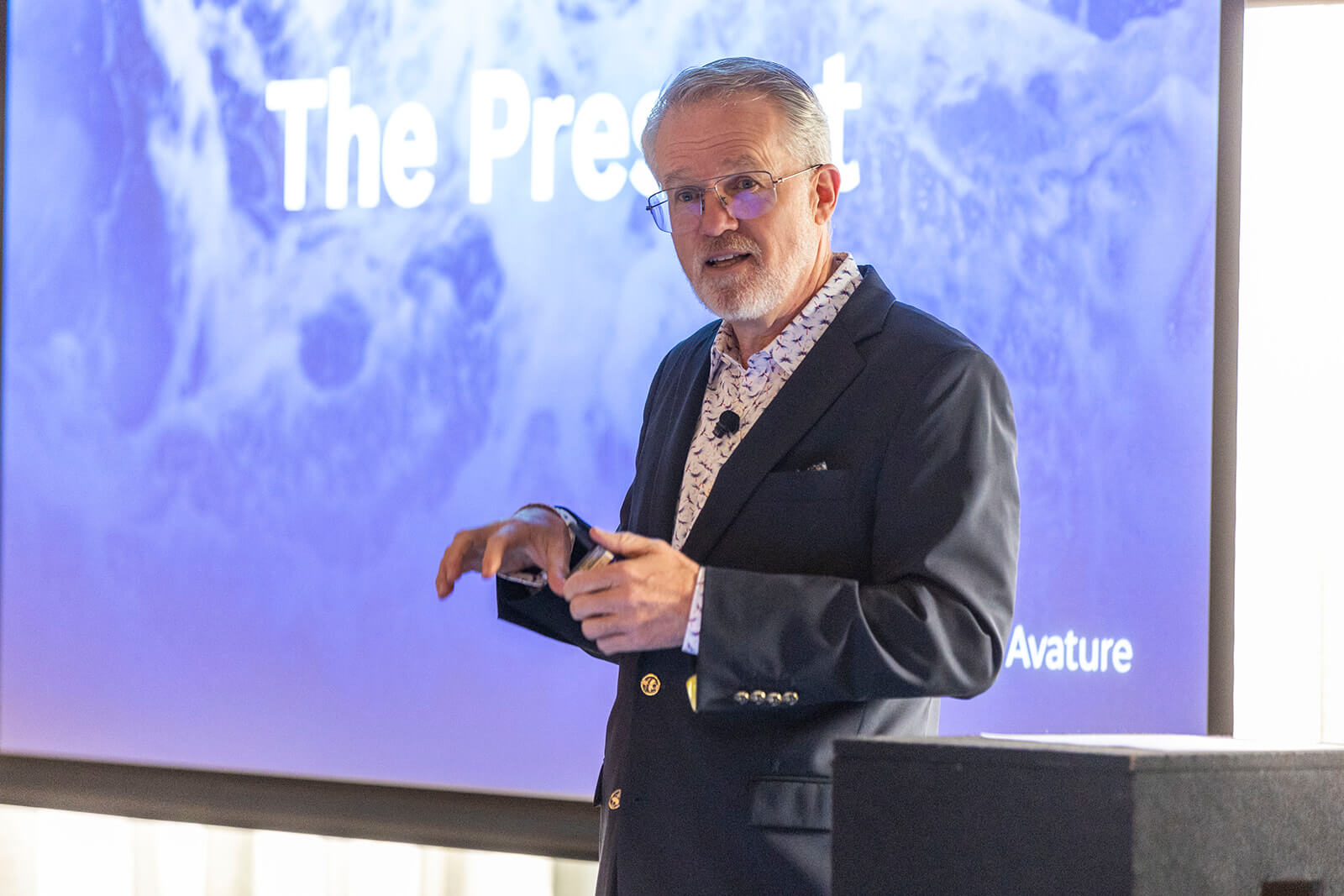
Revolutionizing Recruitment From Within
A key component of #AvatureUpfront is learning from peers, and four industry leaders took to the stage to share their compelling stories. Bupa, Fonterra, Primero and CBRE presented their achievements in talent acquisition powered by Avature. Amidst the diversity of sectors and organizational cultures, a common theme emerged: the pursuit of efficiency, transparency and engagement that can be reached in recruitment processes and how Avature could facilitate their unique visions.
Best Practices In Agile Implementation
Bupa, a forward-thinking healthcare organization, shared the powerful learnings gained from adopting an agile approach to implementation, which enabled them to drive impact in a scalable way while navigating the security challenges associated with operating in the insurance industry.
Georgine Gaynor, Digital People Solutions, and Sarah Posselt, Employee Experience Manager, explained how the organization has undergone a transformative journey of innovation, revolutionizing its recruitment processes through disruptive yet strategic initiatives. Starting small with a minimal viable product of CRM and ATS, they explained how they incrementally added new solutions and integrations to their tech stack achieving their ultimate vision over time. This approach enabled them to break down an ambitious project and go live sooner with small wins that benefit key stakeholders.
These initiatives have significantly enhanced efficiency, transparency and candidate engagement while freeing up resources for recruiting teams to devote to strategic activities. The introduction of a mobile app for recruiters and hiring managers has further improved accessibility and efficiency, expediting the hiring cycle.
Moving Recruiting In-House
“One of the main drivers of the shift from outsourced RPO to in-house recruiting was from a transactional or reactive to a strategic approach,” said Marco Dela Pena, Talent Acquisition Technologies Manager at Fonterra, the dairy science and innovation co-operative owned by thousands of farming families. For the organization, the decision to overhaul the talent acquisition function stemmed from its vision to adopt a much more proactive talent sourcing strategy. This evolution was underpinned by strategic investments in sourcing technology, backed by data and insights, ensuring seamless coordination and efficiency throughout the hiring process.
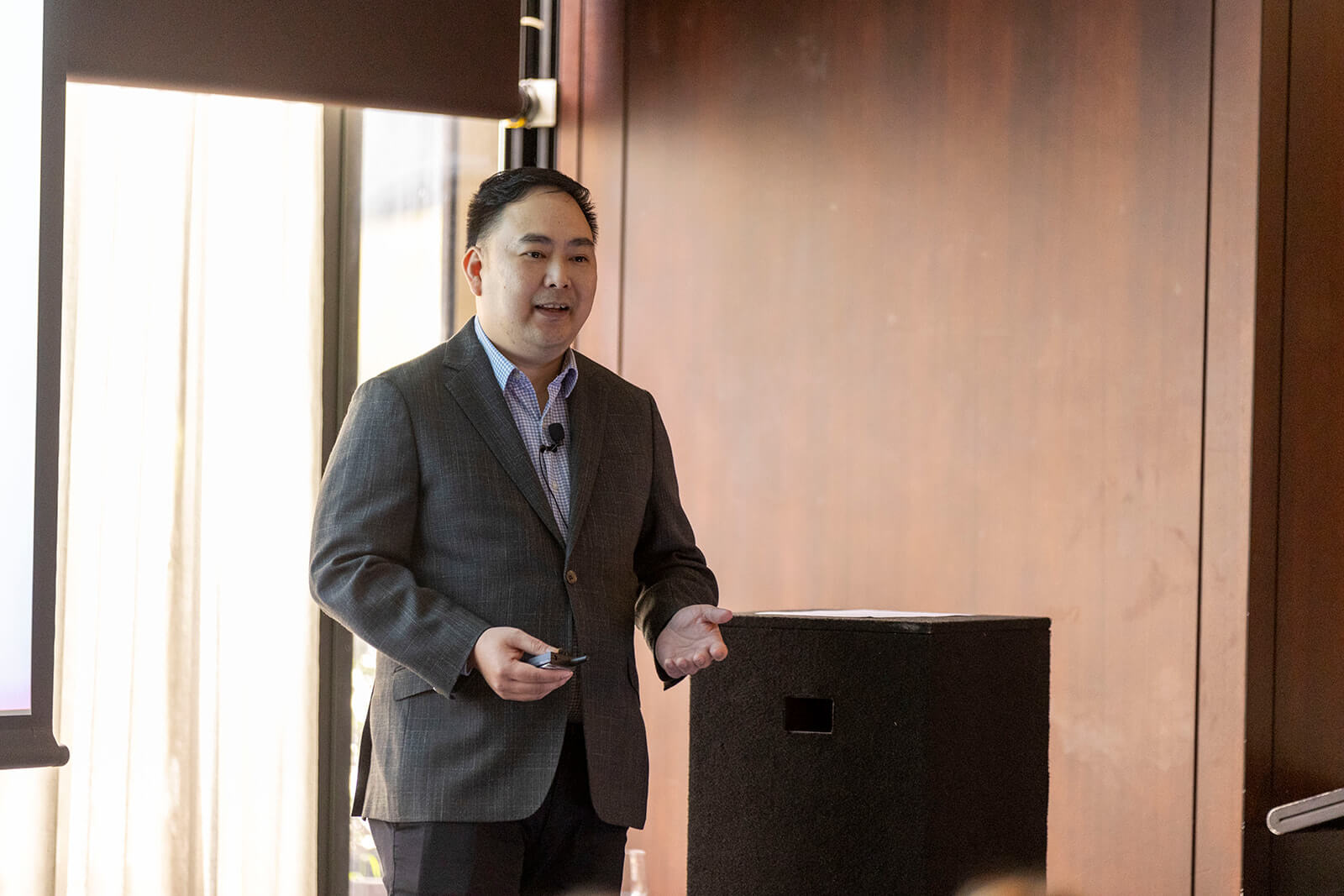
We wanted to have a responsive and scalable model that can deal with seasonal hiring and future fit; this was made possible with the Avature platform.”
Marco Dela Pena
Talent Acquisition Technologies Manager at Fonterra
This transformation also emphasized Fonterra’s commitment to enhancing visibility and engagement within its talent acquisition team. The Avature platform allowed them to have a single source of truth and a responsive, scalable and data-informed model to support seasonal recruitment peaks and changing business needs whilst building the strategic capability and credibility of the talent acquisition function.
Flying the Flag for Smaller Organizations
Primero, a multi-national engineering, procurement and construction business and subsidiary of NRW Holdings, made the case for buying best-in-class technology such as Avature no matter the size of the operation.
The organization, though small, faced the need for more streamlined reporting, resolution of compliance issues and improved efficiency. Caitlin Ashby, Manager of Recruitment, undertook the ‘Engage and Hire’ solution implementation by herself and had the confidence to do so autonomously thanks to one-on-one time with Avature consultants, our comprehensive training campus and completion of our certification programs. Thus, Primero paved the way for sustainable growth and success.
“Our partnership with Avature was meant to be —we both have a ‘can do’ mantra and attitude,” said Ashby in reference to the way the platform has transformed the organization to deliver big impact whilst operating at a small scale. Platform performance has helped build trust within the group of companies, and Primero plans to roll out Avature to the entire organization soon.
Avature has easily allowed us to pivot as our business has grown.”
Caitlin Ashby
Manager of Recruitment at Primero
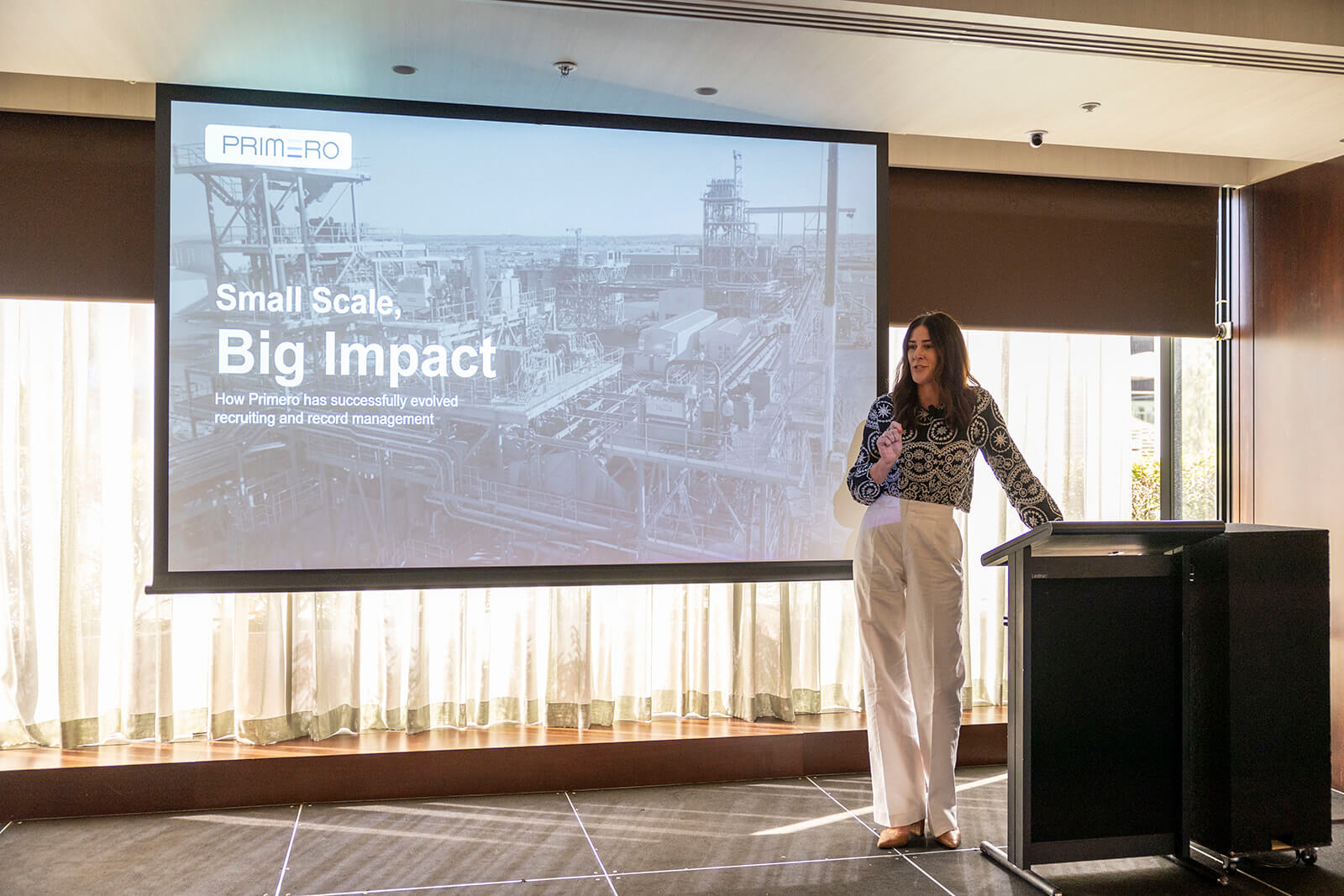
Re-Engineering Offer and Onboarding
Returning to the stage for another year, CBRE, the global leader in commercial real estate services, shared a compelling update of their Avature success story. Having successfully consolidated over 15 disparate recruiting systems operating in silos, this year’s presentation focused on the significant enhancements they’ve made to offer, preboarding and onboarding, ensuring a world-class experience for hiring managers, candidates and new hires.
The Talent Acquisition & Onboarding Project was created to re-engineer the end-to-end process of attracting and sourcing talent through the first year of employment at CBRE. When the team started to get into the requirement-gathering phase, they uncovered an unexpected collection of over 287 offer templates that varied across country, business unit and according to many other factors including contract type, legal entity and employment grade. They also identified a lack of consistent branding.
The next step was to address this highly manual process that was having a direct impact on revenue. To do so, they took steps to consolidate and categorize offer clauses, streamline data points and map data with clauses so the whole process could be automated. This extended to the onboarding process where automation helped ensure IT devices were ready before day one.
This way, CBRE laid the groundwork for a seamless and efficient offer and onboarding process, a pivotal point in a candidate’s journey and experience when joining an organization.
Post-Avature implementation, the results spoke volumes. The enhanced offer and preboarding process saves the company 11,400 hours a year and has delivered a 97% improvement in day-one readiness. For onboarding, CBRE reported staggering savings of 10,550 hours annually, with a remarkable 67 percent reduction in valuable time spent. Eliminating data entry and finger mistakes, CBRE successfully repurposed HR Operations’ time from mundane tasks to quality assurance endeavors.
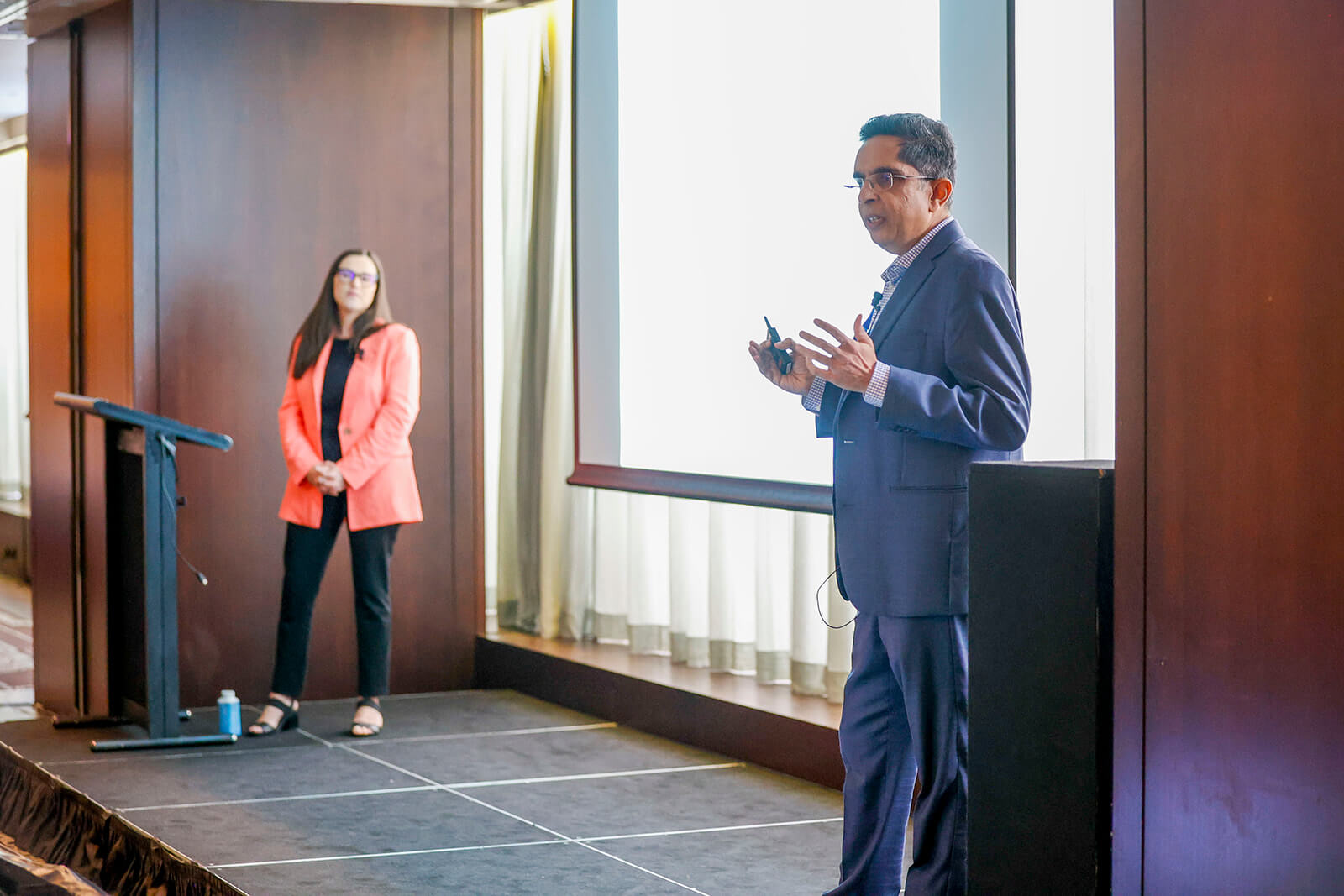
Gender Gap, Back to the Office Mandates and the Integration of AI
Another highlight of the day was the panel discussion, which provided a comprehensive exploration of the hottest talent trends led by Avature’s VP of APAC Adam Walker and TaPod host Craig Watson. Among the topics the panelists discussed were the increasing mandates to return to the office that have emerged in the past year.
With 37 percent of the workforce in Australia working remotely, the evolving norms that surround work paradigms sparked insights on how to balance the need to promote diversity, team building and mentorship, more easily done in face-to-face interactions, and the worker’s demand for flexible schedules.
As James Elliot, Ex-General Manager of Talent Acquisition at Commonwealth Bank of Australia said, the future of work lies in intentional collaboration and the thoughtful design of roles to accommodate the realities of a hybrid work model.
It is easy to go back to the default, back to the office, but I would challenge the status quo. Empowering a hybrid work model requires leadership mindset, culture augmentation”.
Natalie Flynn
Founder at Equidi
Related to new ways of working, one of the central themes of the discussion centered on the Australian government’s recent mandate to report on the gender pay gap, which at the moment is at 21.7 percent. Natalie Flynn, Founder at Equidi, referred to the misconception of bridging the gap by just hiring more women: “Women make up over 50 percent of the Australian workforce. So, when we talk about identifying the gaps in female representation, we need to find out if it is a role segregation issue or an industry issue and define a clear strategy.”
Finally, the conversation turned to the integration of artificial intelligence into the context of workforce management and recruitment to improve visibility, understand human factors and predict outcomes related to workforce burnout in a hybrid work environment.
Panelists agreed that while AI can provide valuable insights and indicators, it won’t create a perfect experience due to the inherent unpredictability of human behavior.
The discussion extended to the ethical implications of AI utilization in recruitment, sparking debates on its impact on assessing candidates’ genuine capabilities. The participants agreed that successful AI integration depends on clear communication, addressing concerns and aligning technological advancements with organizational goals. You can listen to highlights of the panel discussion here.
All About Skills
Skills have been a hot topic for some time, but there’s still no clear consensus in many organizations about how to implement an effective skills strategy. So we were delighted to have Gareth Flynn, CEO of TQ Solutions, who spoke about the importance of an ‘internal-first’ approach and the role of implementing an opportunity marketplace for activating a skills strategy in organizations.
In tune with Boylan’s opening remarks, Flynn underscored the idea that a skills-based organization is worth exploring, though not for everyone. The initiative must be aligned with the business strategy. And while AI is only going to get better in the future, the human ecosystem trumps tech, Flynn pointed out.
In this sense, navigating the intricacies of change management becomes even more crucial in light of recent developments within the organizational landscape. Flynn pointed out that, for every $1 spent on technology, companies should be spending up to $5 on change management activity based on their maturity and readiness. With the vendor count rising to 83 in 2024 from 54 in 2022, the complexities of managing diverse partnerships call for a strategic and adaptable approach.
Furthermore, as 76 percent of stakeholders anticipate revenue growth surpassing 21 percent in 2024, there’s a significant push to align internal processes with external market dynamics. Failure to prioritize change management and under-investing can lead to resistance, decreased morale and ultimately hinder the desired outcomes.
Road to the Future
The last item on the agenda was the unveiling of the Avature Roadmap, with a focus on autonomy and giving customers more control over their digital platform. Notable additions to the Avature platform include:
- An evolving portal app builder to support building complex websites and interactive portals.
- Enhanced configuration management to speed up the time from idea to execution.
- New solutions, including Social Learning and HR Case Management.
Later, in his closing speech, Boylan made a compelling case for embracing innovation as the catalyst for transformative change in business and technology. Central to this call for change is the need to shift away from conventional approaches.
I highly recommend that the first thing you do when you look outside the box is look at other boxes and discover what in your context is innovative. What matters is what is innovative for you and your people. We think the answer to the vision lies in adopting a variation of the internet company operating model and an organic design model. The entrepreneurial spirit, which means a fundamentally different relationship between the business and the technology.”
Dimitri Boylan
CEO of Avature
This way, by designing products that can anticipate and adapt to shifting behaviors, businesses can stay ahead of the curve and drive meaningful innovation.
Like every year, #AvatureUpfront APAC serves as a unifying platform for HR visionaries and forward-thinkers to converge, igniting innovation in an ever-evolving market landscape. The audience left inspired and full of insights to take back to their organizations and redefine their HR paradigms.
See you in 2025!
